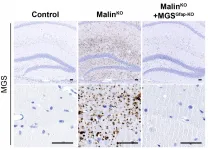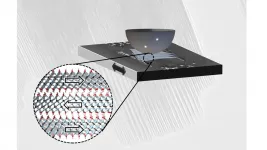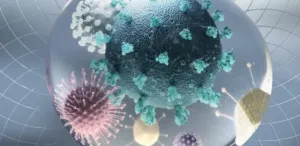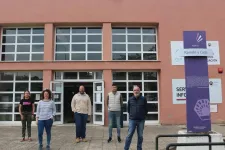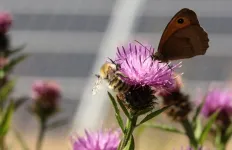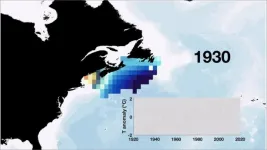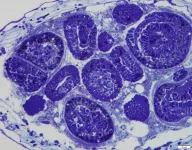(Press-News.org) As we accumulate more and more gene-sequencing information, cell-type databases are growing in both size and complexity. There is a need to understand where different types of cells are located in the body, and to map their gene expression patterns into specific locations in tissues and organs. For example, a gene can be actively expressed in one cell while suppressed in another.
One way of mapping genes into tissues is a technique called in situ hybridization. Simply put, a target gene is tagged ("hybridized") with a fluorescent marker within the sections of the tissue it is located in (the "in situ" part). The sections are then visualized under a specialized microscope to see where the gene "lights up". Consecutive photographs of each section are then put together to generate a "spatial" map of the gene's location inside the tissue.
The problem with methods that use in situ hybridization is that, as the number of target genes grows, they start to become complicated, require specialized equipment, and force scientists to select their targets beforehand, a process that can be laborious if the goal is to reconstruct a full map of gene distribution across tissues.
"Spatializing" sequencing data
Now, scientists at EPFL's School of Life Sciences have created a computational algorithm called Tomographer, which can transform gene-sequencing data into spatially resolved data such as images, and does so without needing a microscope. The work was carried out by the research group of Gioele La Manno, and is now published in Nature Biotechnology.
In the new Tomographer technique, the tissue is first cut along the axis of interest into consecutive sections, each of which is then sliced into tissue strips at different angles. Cells from the strips are then broken down to collect their total messenger RNA (mRNA). Each mRNA corresponds to a gene that was active in the cell. The measurements resulting from the strips can be then used as input to the Tomographer algorithm to reconstruct spatial gene-expression patterns across the tissue.
"The Tomographer algorithm opens a promising and robust path to "spatialize" different genomics measurement techniques," says Gioele La Manno. As an application, the scientists used Tomographer to spatially map the molecular anatomy of the brain of the Australian Bearded Dragon (Pogona vitticeps) - a non-model organism, demonstrating how versatile the algorithm can be.
"Ever since I started med school, I have been admiring the way computer tomography revolutionized the way we examine organs and body parts," says Christian Gabriel Schneider, one of the study's lead authors. "Today, I am very proud to be part of a team that has developed a molecular tomography technology. So far, we have focused on applications in neurodevelopmental biology, but in the future, we can certainly imagine molecular tomography becoming a constituent in personalized medicine."
"It was an exciting opportunity to develop an accessible and flexible computational method that has the potential to facilitate progress in the health sciences," adds Halima Hannah Schede, the study's other lead author. "I am very much looking forward to seeing what other spatially resolved biological data forms will be brought to light with Tomographer."
INFORMATION:
Dr Gioele La Manno is the first Scholar of the EPFL Life Sciences Independent Research (ELISIR) program, a revolutionary Fellowship that gives exceptionally talented PhD graduates the kind of research independence they could usually only get much later in their career. Read an interview with Dr La Manno here: https://actu.epfl.ch/news/meet-gioele-la-manno-the-first-elisir-scholar/
Other contributors
Karolinska Institute
Max Planck Institute for Brain Research
Columbia University
Reference
Halima Hannah Schede, Christian G. Schneider, Johanna Stergiadou, Lars E. Borm, Anurag Ranjak, Tracy M. Yamawaki, Fabrice P.A. David, Peter Lönnerberg, Maria Antonietta Tosches, Simone Codeluppi, Gioele La Manno. Spatial tissue profiling by imaging-free molecular tomography. Nature Biotechnology 19 April 2021. DOI: 10.1038/s41587-021-00879-7
Lafora disease is an inherited neurodegenerative condition that initially develops with seizures in adolescence and evolves with progressive degeneration of the nervous system to death, about ten years after its onset. It is characterised by the accumulation of abnormal glycogen aggregates called Lafora bodies in the brain. There is currently no treatment for this condition, although some therapies are being tested in clinical trials.
Led by Dr. Joan Guinovart, emeritus professor of the University of Barcelona (UB) and also group leader of CIBERDEM, the Metabolic Engineering lab at IRB Barcelona has discovered that Lafora bodies that accumulate in glial cells, which are essential for the proper ...
You can lubricate a bicycle chain with oil, but what do you do with a Mars rover or a red-hot conveyor belt in the steel industry? Very special nanomaterials have now been studied by the TU Wien together with research groups from Saarbrücken (Germany), Purdue University in the USA and the Universidad de Chile (Santiago, Chile).
The material class of MXenes (pronounced "maxene") has caused quite a stir in recent years in connection with novel battery technologies. But it now turns out that they are also an excellent solid lubricant that is extremely durable and performs its task even under the most difficult conditions. These remarkable properties of MXenes have now been published in the renowned journal ACS Nano.
Like a stack of sheets of paper
Just ...
A new type of COVID-19 testing strategy could help streamline the process of identifying cases, tracking variants and detecting co-infecting viruses.
At present, separate assays and complex workflows are involved in each of these three diagnostic procedures, with analyses typically performed in highly specialized facilities. KAUST researchers have now combined all three kinds of tests into a single procedure that should allow for point-of-care tracking of COVID-19 and the many emerging variants of SARS-CoV-2.
"Our all-in-one test provides a promising integrated solution for rapid field-deployable detection and mutational surveillance of pandemic viruses," says stem cell biologist Mo Li, who led the study.
The test involves a portable ...
Scrobiculariaplana is a type of wedge clam widely found along the coasts and estuariesof northern Europe, the Mediterranean and West Africa. Like other mollusks, it is used as a bioindicator to study pollution in these types of ecosystems, for its ability to accumulate heavy metals and organic pollutants.
A new study has managed to identify the transcriptome and the associated proteome of this bivalve, a finding that could represent an important leap forward in the early detection of pollutants in coastal areas. While the genome is the DNA content comprising the genetic information essential for life, the transcriptome includes only the information on genes that are expressed, while the proteome is the totality of proteins expressed at a given time and under specific conditions. Therefore, ...
Frequent use of social media may not amount to the same as addiction, according to research at the University of Strathclyde.
The study invited 100 participants to locate specific social media apps on a simulated smartphone screen as quickly and accurately as possible, while ignoring other apps. The participants were varied in the extent and type of their social media use and engagement.
The exercise aimed to assess whether social media users who reported the greatest level of use were more likely to have their attention drawn to the apps through a process known as 'attentional bias,' ...
Researchers assessing the impact of solar energy development across Europe have come up with ten ways in which the expansion of solar can be shaped to ensure pollinators benefit.
Space-hungry solar photovoltaic (PV) is set to dominate future global electricity supply, but with careful decision making, efforts to secure clean energy need not come at the expense of biodiversity - particularly pollinators which are in sharp decline.
Bees, hoverflies, wasps, beetles, butterflies and moths play a key role in food production, with around 75% of the leading global food crops and 35% of global crop production relying on them to some extent.
Writing in the journal Renewable and Sustainable Energy Reviews, a Lancaster-led team of environmental scientists systematically reviewed the available ...
KINGSTON, R.I., -- April 20, 2021 -- The Northwest Atlantic Shelf is one of the fastest-changing regions in the global ocean, and is currently experiencing marine heat waves, altered fisheries and a surge in sea level rise along the North American east coast. A END ...
Almost 80% of South Africans speak one of the SEB family languages as their first language. Their origins can be traced to farmers of West-Central Africa whose descendants over the past two millennia spread south of the equator and finally into Southern Africa.
Since then, varying degrees of sedentism [the practice of living in one place for a long time], population movements and interaction with Khoe and San communities, as well as people speaking other SEB languages, ultimately generated what are today distinct Southern African languages such as isiZulu, isiXhosa and Sesotho.
Despite these linguistic differences, ...
The Cyclostomata is an ancient group of aquatic colonial suspension-feeders from the phylum Bryozoa. The fact that they have unique placentae has been discovered by researchers at St Petersburg University and the University of Vienna. The coenocytes, i.e. large multinucleate cell structures, originate via nuclear multiplication and cytoplasmic growth among the cells surrounding the early embryo. Interestingly, the coenocytes are commonly found among fungi and plants, yet are quite rare in animals. It is the first time coenocytes have been discovered in placenta.
Biologists are well aware that the cells of the living organisms are incredibly different in the way that they behave. They may happen to form a ...
Targeted therapy in early stages of breast cancer can pave the way for a notable higher success rate, shows a study from the University of Bergen, Norway (UiB).
PARP (Poly (ADP-ribose) polymerase) inhibitors represent an established targeted therapy for multiple cancer types, including cancers of the prostate, ovary and rare cases of breast cancer.
PARP inhibitors take advantage of defects in a central mechanism of DNA damage repair, observed in these cancers. While such compounds have been successfully applied in ovarian and prostate cancers, to this end only a small minority of patients with breast ...
